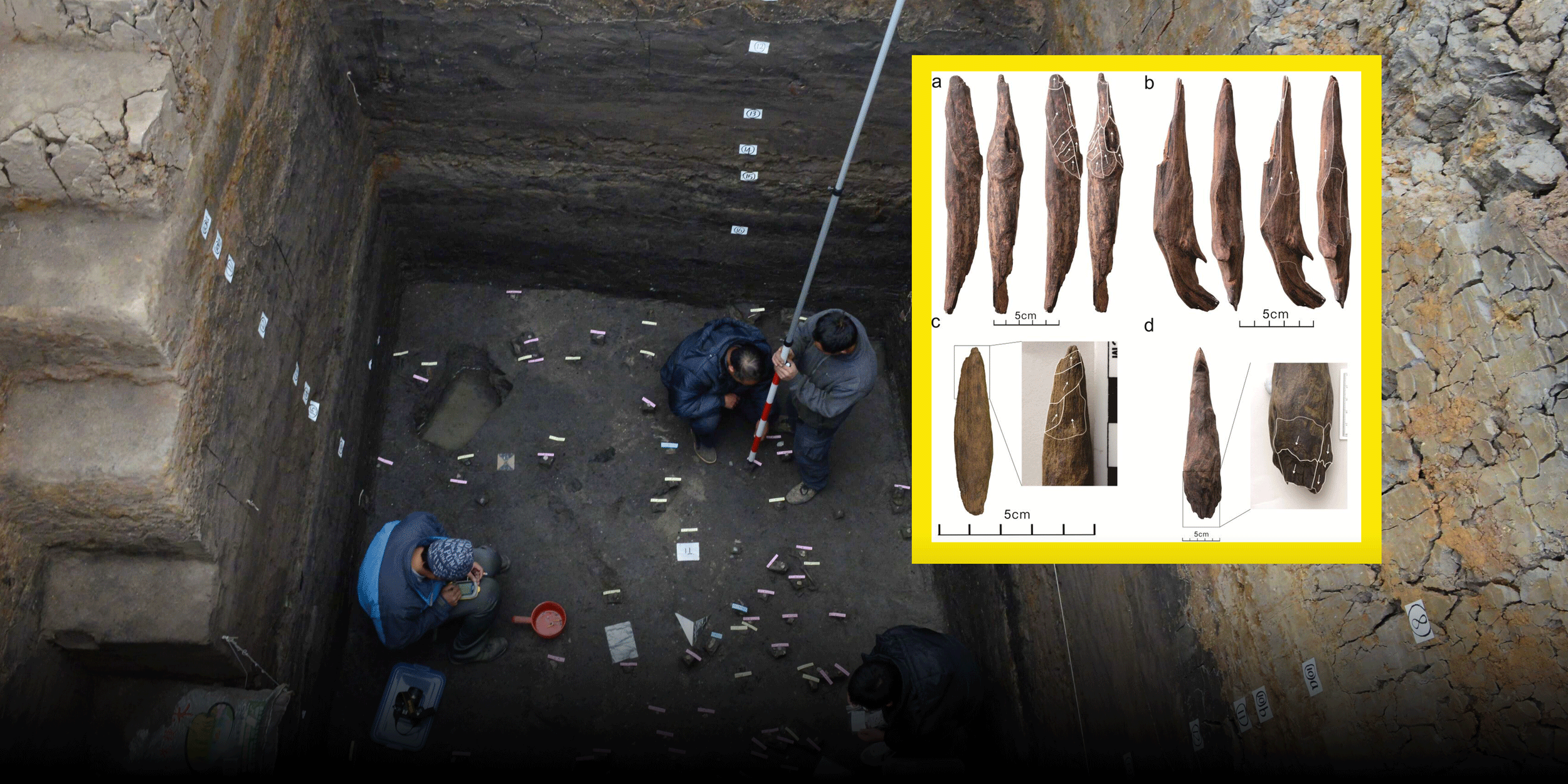
300,000-Year-Old Tools in China Show Early Humans Dug for Plants
A multidisciplinary team led by Chinese scientists recently made a significant archaeological discovery at the Gantangjing Paleolithic site in Yunnan province, southwestern China, unearthing 35 well-preserved wooden artifacts dating back approximately 300,000 years. Confirming their man-made origin and use, the artifacts represent the earliest known wooden implements found in East Asia.
The research team, consisting of experts from various institutions including the Chinese Academy of Sciences and the Yunnan Provincial Institute of Cultural Relics and Archaeology, published their findings in the journal Science on Friday.
The Gantangjing site, situated near Yunnan’s Fuxian Lake, was initially discovered in 1984 and further excavated between 2014 and 2019. Alongside the wooden implements, the archaeological dig unearthed a variety of other artifacts such as stone tools, animal remains, plant seeds, and evidence of controlled fire use.
To demonstrate that the wooden artifacts were made and used by humans, the research team conducted material, trace, and residue analysis, as well as experimental replications that successfully recreated their shape.
“The research found that these wooden artifacts were mainly made of pine, and some artifacts showed scraping marks left by shaping and sharpening,” Gao Xing, a research fellow at the Institute of Vertebrate Paleontology and Paleoanthropology of the Chinese Academy of Sciences, told domestic media. “There was also polishing and fractures on the tips. These wear patterns appear at specific locations and have directional characteristics — clear evidence of human manufacture and usage.”
Residue analysis also revealed plant starch embedded on the tips of some of the tools, indicating their primary function was digging for underground plant-based food and shedding light on how plants formed a major part of these early humans’ diet.
As well as proving that ancient humans were active at the Gantangjing site approximately 360,000 to 250,000 years ago, the findings suggest that the use of wood was an adaptation to the limited availability of stone resources, the team said.
They added that because plant materials decompose easily and rarely form fossils, well-preserved wooden materials and plant seeds are seldom found in Paleolithic sites.
Through multidisciplinary analysis involving geomorphology, stratigraphy, and burial studies, the research team determined that the Gantangjing site sat at the confluence of a lake and river. The sediment carried by nearby water sources gradually accumulated, burying and preserving the tools, plant remains, and other traces of life.
According to Gao, wooden tools from the Paleolithic have been found only sporadically in Africa and western Eurasia. The wooden artifacts unearthed at the Gantangjing site are the first of their kind in East Asia from that period, indicating a reliance on more plant-based resources compared to European Paleolithic sites, where early humans are believed to have primarily relied on hunting large mammals for food.
The “East Asian Bamboo-Wooden Tool Hypothesis” has long suggested that Paleolithic humans in East Asia primarily relied on bamboo and wooden implements, with stone tools serving mainly to craft these organic tools. However, the hypothesis remained speculative due to the lack of archaeological evidence.
“These Gantangjing wooden artifacts greatly broaden our understanding of early wooden tool processing techniques and functional use, providing strong support for the ‘East Asian Bamboo and Wooden Tool Hypothesis,’” Gao said.
Through the analysis of numerous plants remains at the site, including pine nuts, berries, grapes, and herbaceous plants, researchers were also able to determine the diet of these early humans. They also found evidence of underground tubers and aquatic plant rhizomes, which may have been dug up for consumption from the lakeshore’s shallow waters and muddy sediment using wooden tools.
“These early humans adapted to their environment, carrying specialized wooden digging sticks, and systematically went to nearby lakesides to harvest underground tubers, returning home with their haul,” Gao said, painting a picture of ancient life.
“This not only demonstrates their meticulous use of natural resources but also reflects the unique survival strategies and adaptation methods developed by ancient populations living in tropical and subtropical environments,” he added.
Editor: Tom Arnstein.
(Header image: Wooden tools found at the Gantangjing site. Courtesy of the Institute of Vertebrate Paleontology and Paleoanthropology at the Chinese Academy of Sciences)










